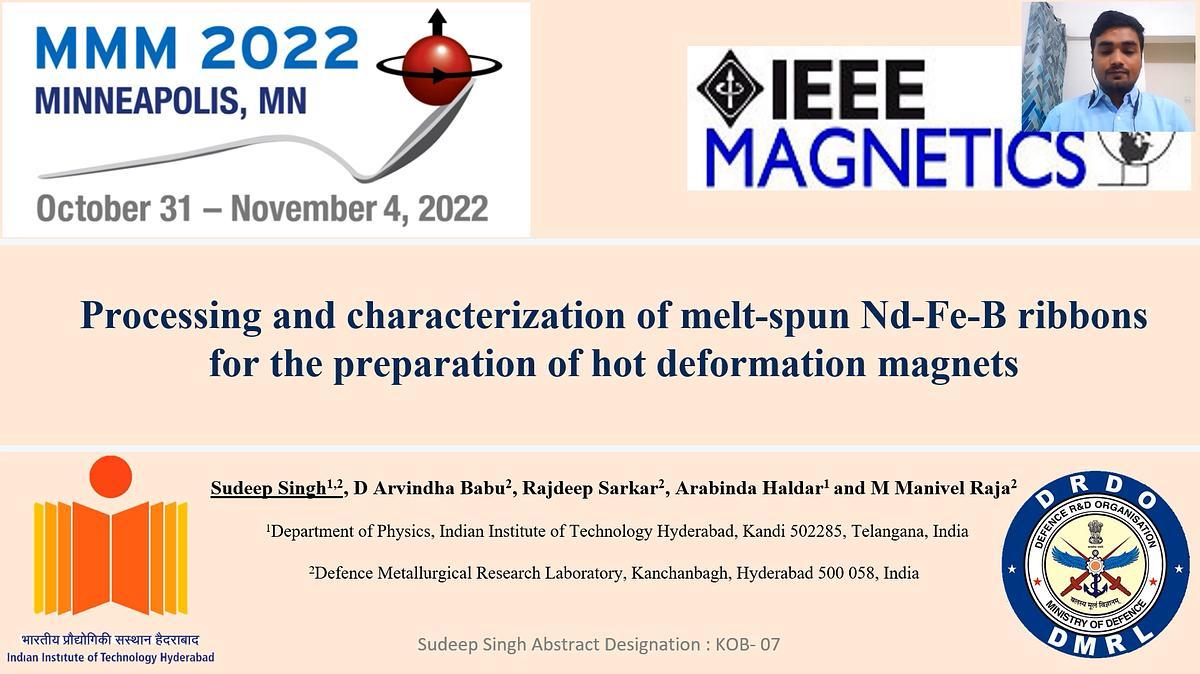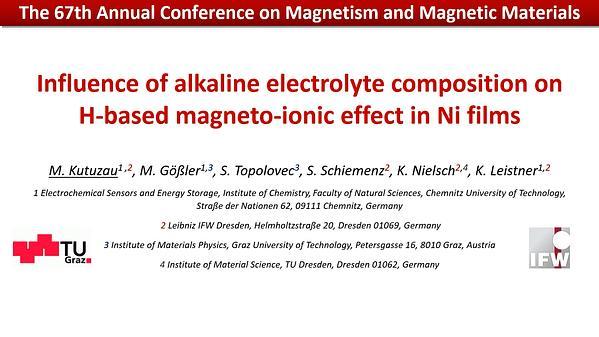
Premium content
Access to this content requires a subscription. You must be a premium user to view this content.

technical paper
Processing and characterization of melt spun Nd
Nd-Fe-B magnets are widely used in electric vehicles (EVs), wind turbines, and electronic devices in civilian and defence sectors due to their high magnetic performance. Alternate to the sintering route, the hot-deformation route does not require heavy rare elements (HRE) such as Dy and Tb and is a promising route to produce Nd-Fe-B magnets at low cost 1. Hot deformed magnets are produced through melt spinning and hot pressing/deformation techniques 2. Nd-Fe-B powder prepared from the melt-spun ribbon is used as precursors and hence optimization of melt spinning parameters is important to obtain desirable grain size and hard magnetic properties 3. Hence a study was undertaken to prepare Nd-Fe-B melt-spun ribbons to tailor the microstructure and hard magnetic properties.
Melt spun ribbons with a nominal composition of Nd13.6Fe73.6Co6.6Ga0.6B5.6 alloy were prepared at various wheel speeds from 17 to 25 m/s. While the structure of the ribbons was obtained using X-Ray diffraction, the microstructure was obtained by transmission electron microscope (TEM). The magnetic properties and thermo-magnetic properties were obtained using a vibrating sample magnetometer (VSM). XRD analysis showed Nd2Fe14B phase with strong (00l) texture in all ribbons and texture fades away at higher wheel speeds. Thermal stability studied by calorimetry showed that the Nd2Fe14B phase was stable up to 500oC, beyond which precipitation of the α-Fe phase takes place. TEM analysis (Fig.1) showed that the Nd2Fe14B phase was distributed uniformly throughout the sample with a grain size of 50-150 nm. The average grain size was found to decrease with an increase in the wheel speed. The remanence (Br) and coercivity (Hc) values were found to increase with the increase in wheel speed up to 23 m/s and beyond which it starts decreasing gradually (Fig.2). Ribbons with the highest magnetic properties having a Br value of 6.6 kG and Hc value of 12.3 kOe were obtained at 23 m/s and may be best suited for the fabrication of hot deformed Nd-Fe-B magnets.
References:
1 N.J. Yu, M.X. Pan, P.Y. Zhang, and H.L. Ge, J. Magn. 18, 235 (2013).
2 K. Hioki, Sci. Technol. Adv. Mater. 22, 72 (2021).
3 C. Rong and B. Shen, Chinese Phys. B 27, 117502 (2018).

Fig.1: TEM image showing the microstructure of Nd-Fe-B ribbon prepared at a wheel speed of 23 m/s

Fig.2: Magnetic properties (Br and Hc) of Nd-Fe-B ribbon prepared at different wheel speeds

